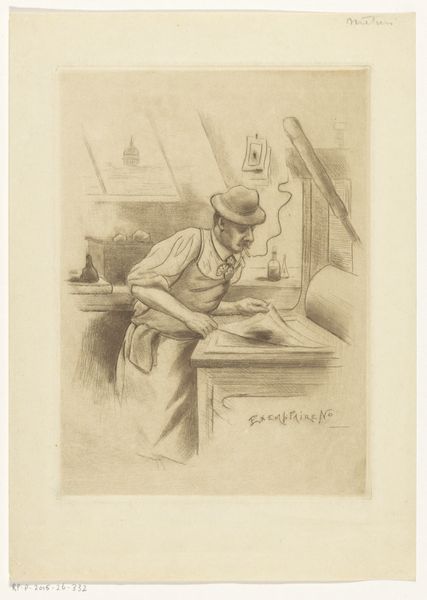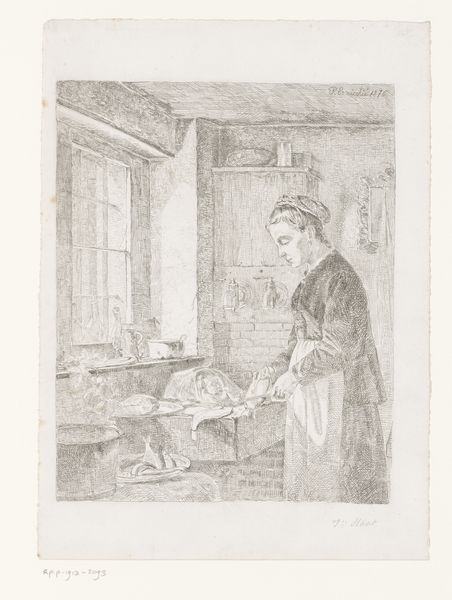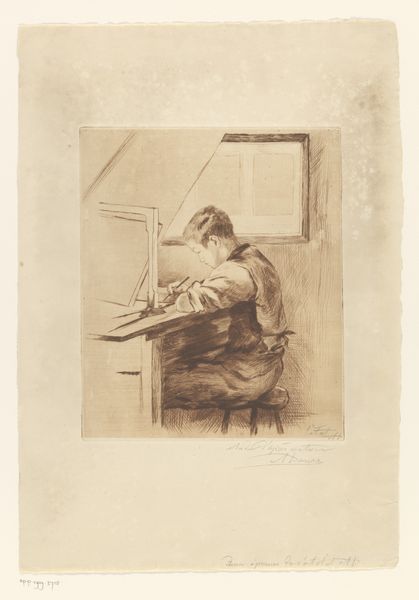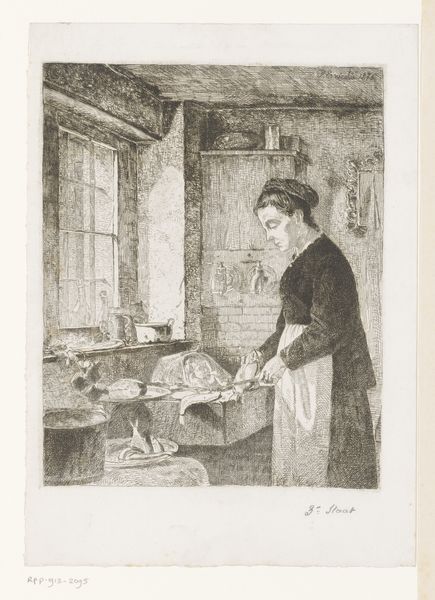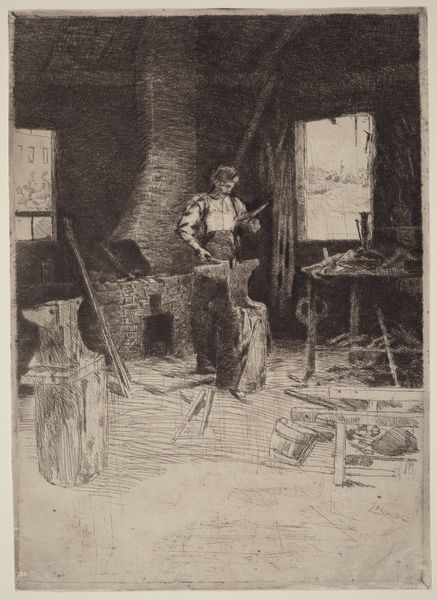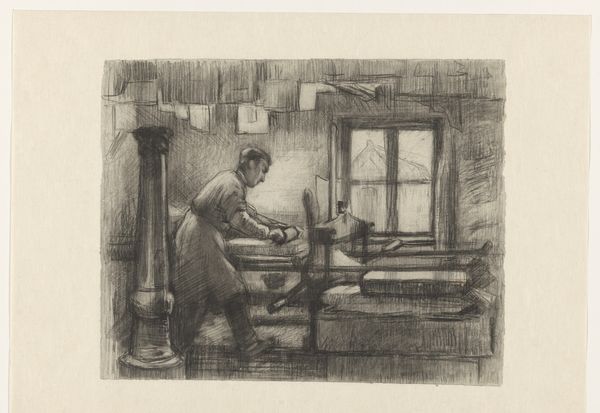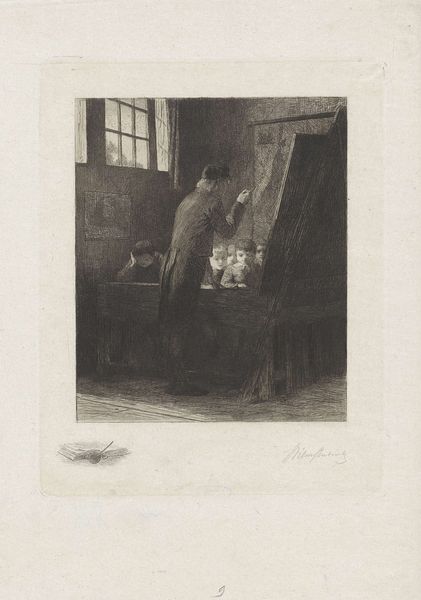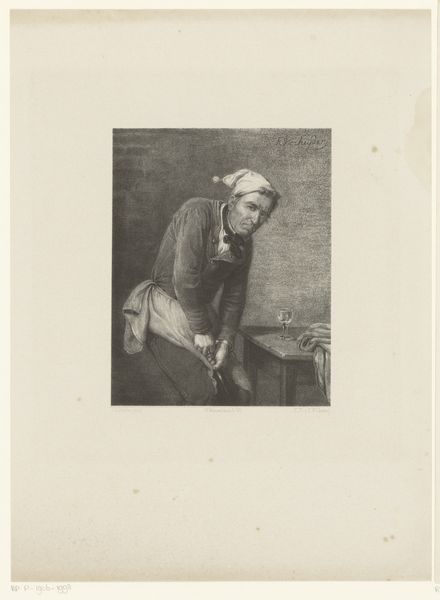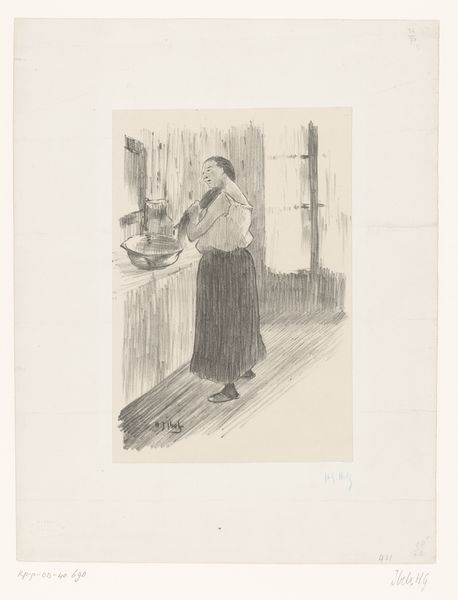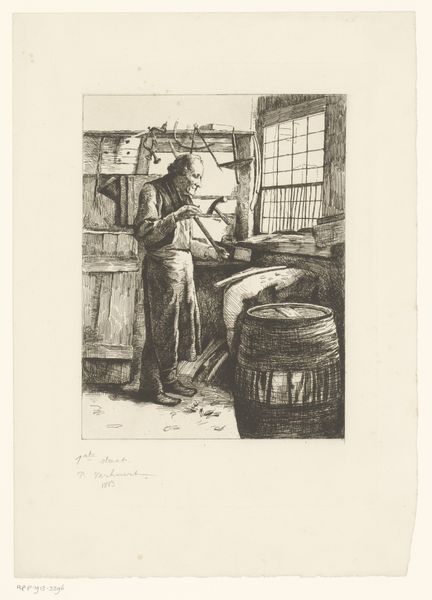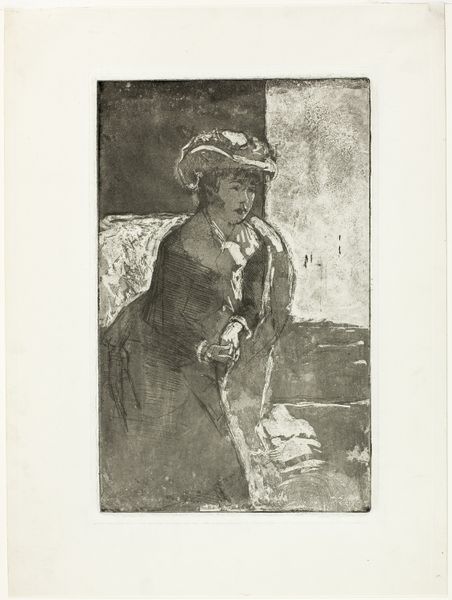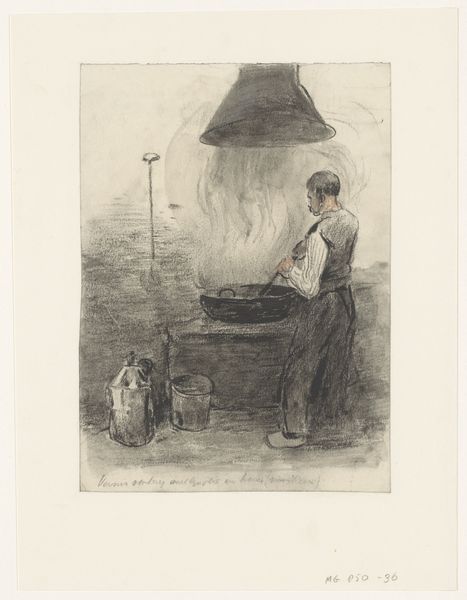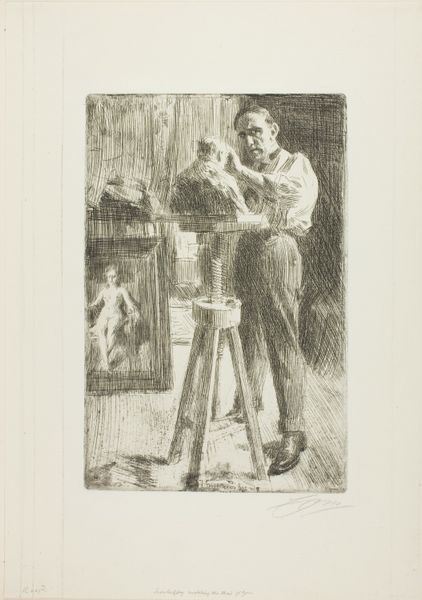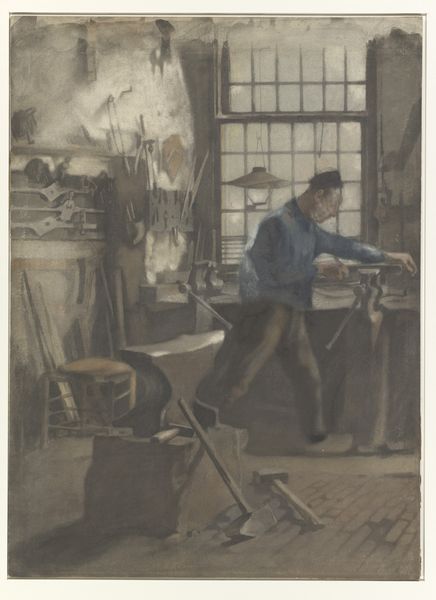
Dimensions: height 200 mm, width 150 mm, height 375 mm, width 280 mm
Copyright: Rijks Museum: Open Domain
Curator: Maximilien Luce, a prominent figure associated with the Neo-Impressionist movement, may have created this print, “Drukker aan het werk in atelier,” sometime between 1893 and 1895. The title translates to "Printer at Work in Studio." Editor: Immediately, I'm struck by the density of line work; it almost vibrates on the page. The etching gives the scene a gritty, industrial feel that resonates. Curator: Yes, the subject of labor is central. Notice how Luce portrays the printer completely absorbed in his craft. He's rendered with remarkable sensitivity, elevating the worker's dignity through art. Think of the socio-political implications during that period. It subtly engages with labor movements and questions surrounding class and identity. Editor: And considering the material, this etching technique itself highlights the labour involved in reproduction. It's an industrial process creating an image of industrial labor. I find myself considering what would the workers consume, and how are their work, skill and knowledge valuable in this process of image making. Curator: Exactly! By focusing on this, the artist seems to humanize the process and challenges prevailing elitist art narratives, perhaps implying the labourer is both skilled craftsman and creator of works of art. Editor: It prompts an investigation into the social implications and questions of production: whose stories get told? Who controls the narrative, both in the studio and beyond? How is class represented here? It's a powerful act. Curator: Yes, viewing the working class as individuals and participants with purpose rather than purely objects of art offers another level of understanding, encouraging us to rethink societal perspectives about marginalized communities of people and consider them to be fully realized actors. Editor: So, it leaves us contemplating not just the image, but the act of printing, its social role and inherent dignity, in its place and time. Curator: Indeed, a compelling reminder of the art historical threads that intertwine production, artistry, social critique and, in essence, our own social position and the stories we’ve come to accept about others.
Comments
No comments
Be the first to comment and join the conversation on the ultimate creative platform.
